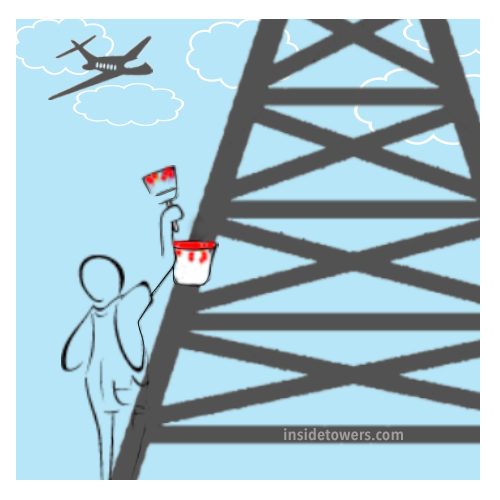New FAA regulations will require landowners to mark any towers between 50-feet and 200-feet on their property, as well as include the towers in a new database the FAA is developing, reports General Aviation News. Previously, towers under 200-feet were not subject to federal marking requirements.
The new requirements stem from provisions in the FAA Extension, Safety and Security Act of 2016 and the FAA Reauthorization Act of 2018.
Meteorological evaluation towers (METs) meeting the requirements stipulated in the bills must be both marked and logged into the FAA database. Communication towers of the same size have the option to be either be marked or logged in the FAA database, according to the account.
The FAA Reauthorization Act of 2018 requires this database to be functional by October. The FAA is also finalizing the marking requirements, however they are expected to be similar to the standards found in FAA Advisory Circular 70/7460-1L, according to General Aviation News.
Section 2110 of the Act on Tower Marking states: “The Administrator shall consider excluding towers located in a State that has enacted tower marking requirements according to the [FAA’s] recommended guidance for the voluntary marking of meteorological evaluation towers erected in remote and rural areas that are less than 200 feet above ground level to enhance the conspicuity of the towers for low level agricultural operations in the vicinity of those towers.”
North Dakota farmer and aerial applicator Brian Rau has a 96-foot Real Time Kinematic tower on his property. RTK towers supplement the GPS systems of automated ground-based farm equipment. He added fluorescent ball markers within the structure’s skeleton soon after it was converted from a communications tower to an RTK tower. “Seeing the growth of communication towers in North Dakota and across the county, I knew it was important to both mark and properly log the tower,” Rau told General Aviation News.
FAA Advisory Circular 70/7460-1L on obstruction marking and lighting details the ways different types of obstructions may be marked. The document provides specs on lighting systems, colors and light intensities. As an alternative to lighting, the document also explains tools for the “unlighted marking” of obstructions. This includes paint colors and patterns, as well as specifications for guy wire sleeves and high-visibility spherical markers.
Rau chose the latter option for marking his RTK tower. “The ball markers seemed the easiest for an existing galvanized tower, and they really improved [its] visibility,” he said.
Landowners are encouraged to submit an obstruction to the FAA’s Daily Digital Obstacle File by emailing the tower’s height and coordinates to 9-AJV-532-OBSTData-REQ@faa.gov.
By Leslie Stimson, Inside Towers Washington Bureau Chief
July 26, 2019





Reader Interactions